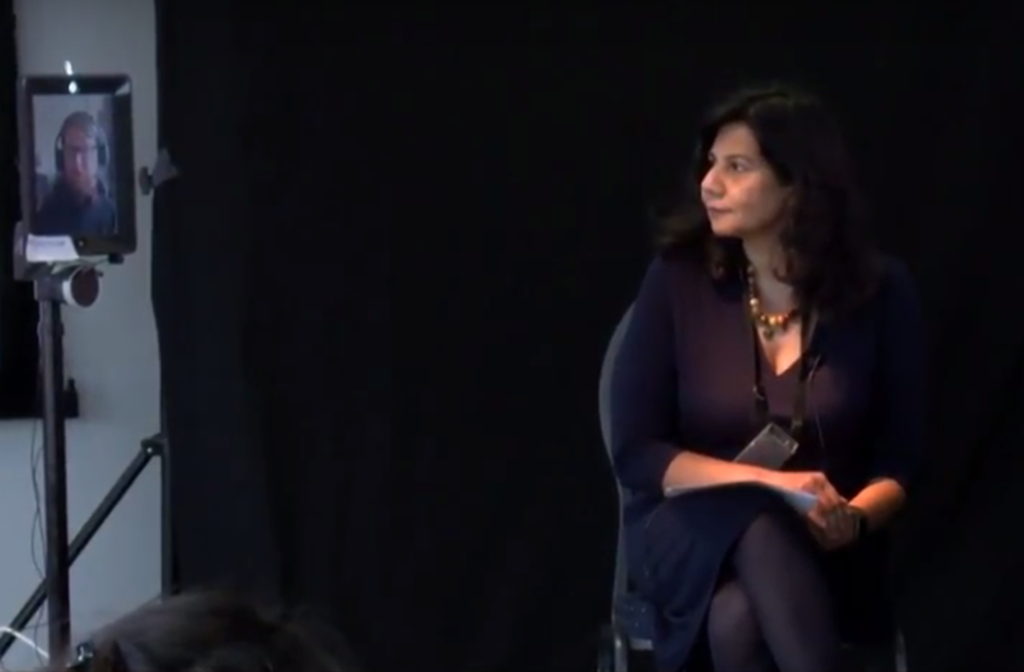Watch the film of this discussion here:
We invited academic and disabled rights activist Miro Griffiths to attend our recent symposium on the past and future of disabled people at MShed in Bristol. But he attended in a slightly unusual way: not in person or by livelink, but connected to a robot constructed by Bristol Robotics Laboratory.
Essentially, it’s a screen on a long pole and wheels, which Miro could use remotely from his home. The ability to move around the space transformed his experience of the conference – when attendees were considering ideas in groups at their tables, he could move among them and pause to listen and take part. Instead of being stuck ‘outside looking in’, he could curate his participation in the conference, much more like actually inhabiting the space.
At the end of the day, he spoke to Dr Praminda Caleb-Solly who is an Associate Professor of Independent Living Systems at the Laboratory. What did he think?
Can robotic technology give disabled people more agency?
Praminda and Miro got to know each other in the three weeks leading up to the conference – Praminda comes to the tech as an engineer, but for Miro, the experience is personal.
Firstly, he highlighted the positives. There is the potential to affect the status of disabled people in society for the better. Disabled people have history of exclusion – technology like this opens range of opportunities from employment to learning. It disrupts our idea of that begin present is the best solution for everyone. Attending a conference in this way is less draining.
Presence by robot could also be an extra step in addressing social isolation: perhaps particularly among the two million over 75s who live alone. The gaming community is a good example of how technology has already enabled meaningful remote connection, with disabled and non-disabled people living in a network and building friendships across the world.
There is also more casual potential – such as being able to hang around and chat in the kitchen while resting in the bedroom. Praminder highlighted the capacity for more intergenerational contact – a grandparent could teach a grandchild to cook, potentially even from another continent.
The downside is the risk that disabled people will be abandoned to the care of robots, and that existing social contact and human support will be further eroded. In Europe, it is projected that there will be a shortage of two million carers in Europe by 2030 – will someone receiving physiotherapy after stroke be assisted by robot backup, or merely see their physiotherapist taken away?
Technology is so often presented as a brave new world of opportunity, and not something with inherent perils. There must be relationships between policy designers and disabled people, and technology should not be used as a way of reducing the cost of human interaction. It’s a paradox that already exists in the idea of Independent Living: for disabled people the aspiration within the term is the freedom to be able to do what you want with your life. The reality is too often being trapped in isolation.
The importance of testing
There are some challenges from the engineer’s perspective too. Praminder says that as a gatekeeper, the lab faces having to jump through many hoops before being able to trial the technology with potential user groups. Without being able to trial, discuss ownership, and see how a robot works in practice at the receiving end, there’s a risk of policies beign made without without all the consequences having been thought through.
As new technology comes online – like the stair-climbing wheelchair currently featured at the Design Museum – only the participation of disabled people in the conversation will keep the technology on track to expand possibilities, not introduce new divisions between those with opportunity and those shut out by policy and cost.











